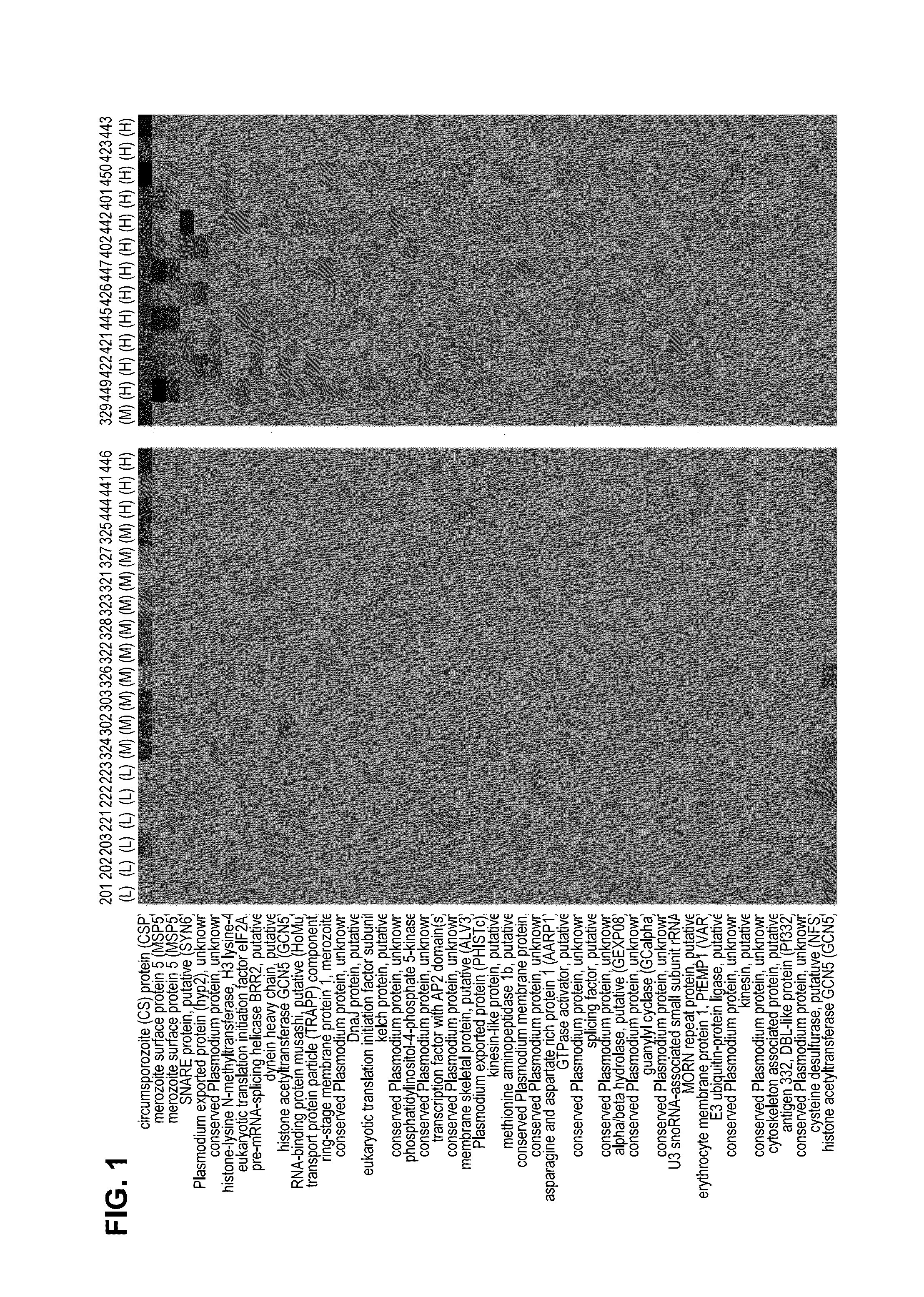Serum antibody assay for determining protection from malaria, and pre-erythrocytic subunit vaccines
a malaria and antibody assay technology, applied in the field of malaria immunology, can solve the problems of low-level immune response and minimal protection, cumbersome and expensive chmi, and limited efficacy
- Summary
- Abstract
- Description
- Claims
- Application Information
AI Technical Summary
Benefits of technology
Problems solved by technology
Method used
Image
Examples
example 1
[0090]A clinical trial testing the immunogenicity and efficacy of aseptic, radiation-attenuated, purified, cryopreserved sporozoites used as the immunogen in a vaccine formulation (Sanaria® PfSPZ Vaccine, provided by Sanaria Inc.), and administered by intravenous injection, resulted in 13 individuals that were protected against controlled human malaria infection (CHMI) and 19 that were not protected (Table 1). In the group receiving the highest dosage (675,000 total PfSPZ), 6 out of 6 individuals were protected; and the group receiving the next lower dosage (540,000 total PfSPZ) had 6 out of 9 protected (Seder, et al. Science 2013).
TABLE 1Protection efficacyTotal##Protec-PfSPZ perdosage ofvolun-Pro-Protec-tion %DoseDosesPfSPZteerstectedtion %Combined7500430000300%0%(low)645000300%3000041200009111% 9%(medium)6180000200%13500045400009666% 80% (high)567500066100%
[0091]The 5-dose (675000 SPZ) group in which all subjects were protected differed in two potentially important ways from oth...
example 2
[0092]Serum from each of the subjects was drawn 14 days after administration of the last dose. Each serum sample was probed using the Pf microarray as described. As shown in the heat map of the top 50 differentially reactive serum antigens (FIG. 1), subjects receiving the high dosage (540,000 and 675,000) of Sanaria® PfSPZ Vaccine demonstrated the strongest reactivity. Two antigens (CSP and MSP5) proved to be the most reactive with regard to complementing serum antibodies.
example 3
[0093]32 sera samples from the intravenous injection immunization trial of Sanaria® PfSPZ Vaccine, described in Example 1 above, were probed with Pf1000 microarray down-selected from a large array containing 4,528 Plasmodium falciparum (Pf) protein features representing 50% of the parasite proteome. Among the 32 sera samples, 13 were obtained from the protected individuals and 19 from the unprotected individuals. FIG. 2 shows the top 50 differentially reactive antigens comparing the protected and unprotected groups. The graph is sorted by the antigen reactivity of protected group along with the p-value and cut-off value.
PUM
| Property | Measurement | Unit |
|---|---|---|
| thick | aaaaa | aaaaa |
| heat map | aaaaa | aaaaa |
| antigen reactivity | aaaaa | aaaaa |
Abstract
Description
Claims
Application Information
 Login to View More
Login to View More - R&D
- Intellectual Property
- Life Sciences
- Materials
- Tech Scout
- Unparalleled Data Quality
- Higher Quality Content
- 60% Fewer Hallucinations
Browse by: Latest US Patents, China's latest patents, Technical Efficacy Thesaurus, Application Domain, Technology Topic, Popular Technical Reports.
© 2025 PatSnap. All rights reserved.Legal|Privacy policy|Modern Slavery Act Transparency Statement|Sitemap|About US| Contact US: help@patsnap.com



